Ditapis dengan

Safety Series No.107:Radiation Safety of Gamma and Electron,Irradiation Facil…
Gamma and electron irradiation facilities have to be constructed so that during normal use any radiation exposure of workers will be very low and there is no significant exposure to individual members of the public. However, significant radiation exposure may result from loss of control over or damage to the radiation source. In extreme cases the exposures may be sufficient to cause serious inj…
- Edisi
- -
- ISBN/ISSN
- -
- Deskripsi Fisik
- -
- Judul Seri
- -
- No. Panggil
- -
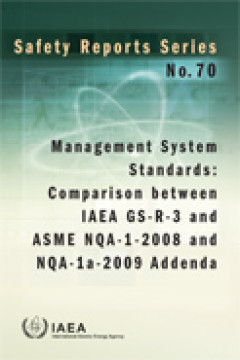
MANAGEMENT SYSTEM STANDARDS: COMPARISON BETWEEN IAEA GS-R-3 AND ASME NQA-1-20…
This Safety Report compares the requirements of IAEA Safety Standards Series No. GS-R-3, The Management System for Facilities and Activities, and the American Society of Mechanical Engineers (ASME) Quality Assurance Requirements for Nuclear Facility Applications (ASME NQA-1-2008, NQA-1a-2009). It identifies the similarities and differences between them and provides information and guidance to a…
- Edisi
- -
- ISBN/ISSN
- 9789201208101
- Deskripsi Fisik
- 76 pages, 24 cm
- Judul Seri
- Safety Reports Series 70
- No. Panggil
- -

Calibration of Radiation Protection Monitoring Instrumens
This Safety Report provides guidance on the establishment and operation of calibration facilities for radiation monitoring instruments. It reflects the current internationally accepted principles and recommended practices in calibration procedures, taking account of the major changes and developments that have occurred over the past decade.
- Edisi
- -
- ISBN/ISSN
- -
- Deskripsi Fisik
- 153 p. : illus. ; 24 cm
- Judul Seri
- Safety Reports Series No.16
- No. Panggil
- 621.317 IAE c

Calibration of Radiation Protection Monitoring Instruments
This Safety Report provides guidance on the establishment and operation of calibration facilities for radiation monitoring instruments. It reflects the current internationally accepted principles and recommended practices in calibration procedures, taking account of the major changes and developments that have occurred over the past decade.
- Edisi
- -
- ISBN/ISSN
- 9201001002 / 10206450
- Deskripsi Fisik
- 153 p. : Illus. ; 24 cm
- Judul Seri
- Safety Reports Series No. 16
- No. Panggil
- 621.317 IAE c
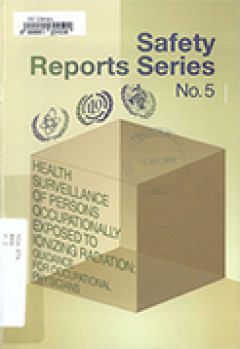
Health Surveillance of Persons Occupationally Exposed to Ionizing Radiation: …
This Safety Report specifies features of work under radiation conditions, the general rules of radiological protection for occupational exposure and the organization of the medical surveillance of workers occupationally exposed to radiation. It supersedes IAEA Safety Series No. 83, Radiation Protection in Occupational Health: Manual for Occupational Physicians (1987).
- Edisi
- -
- ISBN/ISSN
- -
- Deskripsi Fisik
- -
- Judul Seri
- Safety Reports Series No. 5
- No. Panggil
- 594.12
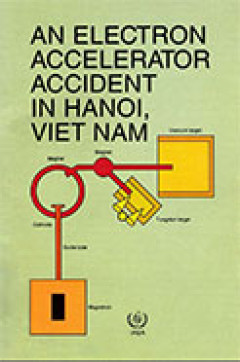
An Electron Accelerator Accident in Hanoi, Viet Nam
n 17 November 1992 a radiological accident occurred at an electron accelerator facility in Hanoi, Viet Nam. An individual entered the irradiation room without the operators' knowledge and unwittingly exposed his hands to the X ray beam. His hands were seriously injured and one hand had to be amputated. The report details the circumstances of the accident, its medical consequences and the govern…
- Edisi
- -
- ISBN/ISSN
- 9201004966
- Deskripsi Fisik
- 36 p. : Illus. ; 24 cm
- Judul Seri
- -
- No. Panggil
- 537.5 IAE a
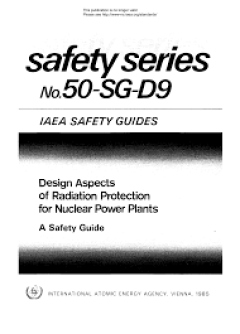
Design Aspects of Radiation Protections for Nuclear Power Plants, Safety Guides
This Safety Guide provides principles and practical details on the provisions to be made in the design of nuclear power plants to protect site personnel and the general public from ionizing radiation during operational states and accident conditions. The dose limitation systems, including the ALARA principle, are described as the basis for appropriately addressing the radiation protection featu…
- Edisi
- -
- ISBN/ISSN
- 9206231847
- Deskripsi Fisik
- 48 p. : Illus. ; 24 cm
- Judul Seri
- Safety Series No. 50-SG-D9
- No. Panggil
- 621.48 IAE s
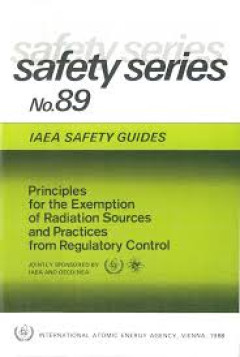
Principles for the Exemption of Radiation Sources and Practices from Regulato…
The need for a consistent international approach to exclusion and exemption of radiation sources and practices from regulatory control has become increasingly evident, especially for sources which may be transported from one country to another, such as consumer products containing very small amounts of radioactive material. This safety guide represents a first international consensus on the sub…
- Edisi
- -
- ISBN/ISSN
- 9201238886 / 00741892
- Deskripsi Fisik
- 23 p. : Illus. ; 24 cm
- Judul Seri
- Safety Series No. 89
- No. Panggil
- 539.7 IAE p
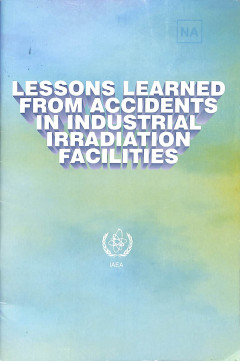
Lessons Learned from Accidents in Industrial Irradiation Facilities
This book consist : Introduction; Brief description of accidents; Major causes of accidents and lessons learned; and Prevention and remedial actions. (Jml)
- Edisi
- -
- ISBN/ISSN
- 920102696X
- Deskripsi Fisik
- 52 p. : Illus. ; 24 cm
- Judul Seri
- -
- No. Panggil
- 621.48 IAE l

Protections Against Neutron Radiation, and so on
This book consist: Introduction; Elements of neutron protection; Radiation protection in installation and operation of neutron sources; Rules for protection against neutron radiation, and so on. (Jml)
- Edisi
- -
- ISBN/ISSN
- -
- Deskripsi Fisik
- - p. : illus. ; 23 cm
- Judul Seri
- NCRP Report No. 38, 39, 40, 41
- No. Panggil
- 359.725 NCR p
 Karya Umum
Karya Umum  Filsafat
Filsafat  Agama
Agama  Ilmu-ilmu Sosial
Ilmu-ilmu Sosial  Bahasa
Bahasa  Ilmu-ilmu Murni
Ilmu-ilmu Murni  Ilmu-ilmu Terapan
Ilmu-ilmu Terapan  Kesenian, Hiburan, dan Olahraga
Kesenian, Hiburan, dan Olahraga  Kesusastraan
Kesusastraan  Geografi dan Sejarah
Geografi dan Sejarah